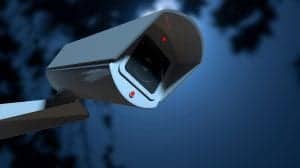
The growing number of smart buildings in London is a remarkable example of the pervasiveness and subtlety of modern-day progress. They have been touted as “tomorrow’s technology” for more than a decade now, and we are used to thinking about them as if they were just beyond our reach – but a fifth of the commercial buildings in the UK can readily be described as smart buildings.
Moreover, the global smart building market is expected to exceed 50 billion USD by 2024. The smart building revolution has already happened, but it was so steady and quiet that it looked more like normal, expected development than an overnight real estate coup d’état.
Smart buildings can deliver on their promises, but only through a well-integrated infrastructure. The “smart” in smart buildings is akin to the “smart” in “smart planning”: smart buildings offer the means to achieve lower costs and a better energy footprint, but simply moving into a smart office will not yield too many benefits overnight. Instead, a smart building is an active piece of infrastructure that you can exploit to your advantage.
Today, we will explore some of the most efficient ways to do that.
Increased energy efficiency, simplified and more efficient facility management, and a steady improvement of operating cost are among the most often-cited advantages of smart buildings. But how are these advantages achieved?
The primary mechanisms at play here are:
The foundation for two of these mechanisms – consolidation and integration – is your network’s cabling infrastructure, and it is at this level that integration is initially performed. Tuning – or designing – you network’s cabling infrastructure with these three mechanisms in mind is the first step to capitalising on a smart buildings’ potential.
For a long time, communication (especially voice communication) and IT infrastructures were largely independent from each other, except for the final stages of the company network, where Internet and voice lines sometimes met. The security infrastructure was purposely separated from anything else, and facilities monitoring, lighting and HVAC systems were often beyond the control of all but the largest of companies, which had entire campuses for themselves.
The move to VoIP and the greater bandwidth requirements of security systems meant that communication and security systems were the first to be integrated in companies’ data networks. IT-integrated security is the norm today. IoT took care of the remaining systems.
What does this mean in practice?
Consolidated cabling infrastructures are no exception from the rule regarding the proverbial free lunch and its highly disputed existence. High-speed, structured cabling infrastructures do require a greater planning effort, and the installation procedures are non-trivial and follow complicated standards.

Some aspects of the installation procedures have no technical implications, but do have important legal implications – they aim to ensure compliance with legislation such as the Workplace (Health, Safety and Welfare) Regulations acts. Others have strict technical implications, however: even things such as how much you can bend a network cable and still have it work at its rated speed parameters are standardized, and failing to follow these requirements leads to flaky, unstable networks.
A consolidated cabling infrastructure is the first step towards integrating the IT, security and energy infrastructure of a facility. These integration efforts are valuable both through the actionable items that they readily offer, and through the wealth of data that they can provide.
The former provide immediate benefits. The latter is a gift that keeps on giving, as it enables you to ground decisions in real-world data about your business’ everyday activity, rather than general conclusions about a wide range of companies.
High-speed data networks have been instrumental in increasing the quality and coverage of CCTV systems, which form the vanguard of most security systems today. Not only do high-speed data networks enable high-resolution monitoring, supporting features such as automating number plate recognition, but they also provide the base for advanced archival systems that allow security professionals to easily locate, retrieve and make forensic use of CCTV footage.
Integrating the energy and IT infrastructures of your business’ office lends flexibility to what used to be one of the most inflexible components of a company’s operating costs – energy use, in all its forms, from lighting and HVAC, to running water and waste management. Smart building technologies can reduce energy costs by an average of 18% (full report here).
The mechanisms that enable cost savings are remarkably diverse. The more obvious ones include turning off unnecessary lights through the use of occupancy sensors and adjusting HVAC parameters based on occupancy and time of day. But there are less obvious, if remarkably efficient mechanisms at work, too. For example, high-speed networks enable remote working more easily – and, in turn, occupancy-aware energy use maximizes the impact of remote work.
This close integration does come at a price: increased network workload. This is especially the case for security systems, which make use of high-resolution imaging sensors and can be particularly latency-sensitive.
However, the diversity of systems that this integration involves also tends to result in a great diversity of deployment scenarios. Devices – and, as a consequence, network cables – routinely get deployed in special scenarios that were not typically associated with an office network, such as:
The benefits of an integrated cabling approach seem compelling enough, but clearly things are not so simple — otherwise everyone would be doing it by now.
What are some of the challenges you can expect in terms of cabling and infrastructure development?
Standards and Building Codes. One of the most complicated aspects of intelligent building cabling is the fact that, like many emergent technologies, many aspects of intelligent buildings technologies are not yet standardised or well-understood.
The UK has a complex network of workplace safety laws, construction codes and standards regarding the design, installation and operation of electrical and data networks. There are restrictions about what cables can be used, where they can be placed, what kind of mechanical support they need and so on.
These restrictions are meant to ensure that networks are safe to operate on an everyday basis, and that they do not impede rescue operations in case of fire or other disasters.
There are also various industry-specific requirements, such as those regarding the placement of CCTV cameras and other security equipment. Some of them are legally-binding.

In contrast, there is hardly any such thing as a standard that tells us how to design intelligent buildings. Industry groups active in the intelligent building arena, such as BICSI, do publish standards pertaining to technologies in intelligent buildings, but that’s as far as it goes.
Navigating this thick web of regulations can be a daunting task — especially since some of them are legally-binding, and not complying with them bears legal consequences. This is especially challenging for small companies, which cannot afford to develop and maintain this sort of know-how internally.
Especially for smaller companies, we recommend relying on open, well-understood technologies, in detriment of proprietary, vendor-specific solutions. The former are usually the result of cross-vendor collaboration and harmonizing them with international standards and legal requirements is an inherent component of such an effort. For the latter, vendors often have no incentive to ensure broad compliance with other standards — and the know-how required to provide a solid and safe installation is hard to come by and expensive.
Planning and flexibility. Structured cabling and integration with networks that are, to some degree, beyond your direct control, require considerably more planning effort and reduce small-scale flexibility. One could argue that flexibility is often misspent on ad-hoc patchwork, but practical experience shows that ad-hoc patchwork has its role in complex infrastructures.
However, we have also seen these traits wielded so as to impart structure and stability to infrastructure development efforts. Adherence to an industry-standard model guarantees long-term support for your development plans and ensures that your network’s growth is sustainable.
Security and privacy. Say what you will about a plain old wall switch, but there is no way it can be hijacked over the Internet and used to syphon data or further compromise the network’s security.
Additional complexity brings additional security risks which you should be aware of. At the same time, many security-related features that London modern intelligent buildings have can be used to your advantage.

Intelligent buildings are not so much a particular technology as a paradigm regarding how to integrate many advanced technologies such as intelligent sensors, analytics and distributed control systems, and IoT. Combined coherently, these technologies can greatly improve the efficiency, comfort and security of your business’ operations.
The fabric of this great swarm of intelligent systems is a solid data network, most of which is either wired, or supported by a wired backbone. Consequently, a solid cabling is an essential component of the foundation of an intelligent office.
The diversity and complexity of intelligent systems and technologies make it challenging to design, and especially to install and develop cabling infrastructures.
If you want to make the most out of your London smart building, trust professionals with your cabling solutions. Contact ACCL now and get your FREE, no-obligations on-site survey. We’d be happy to offer recommendations on how to approach your smart building’s cabling, as well as implement it for you.
We’ve been in the cabling business for over 25 years. Trust London’s preferred cabling solutions provider!
Services mentioned in this post: Data cabling installation, Cat6a cabling, Fibre cabling, CCTV cabling, IT Planning
Services related to this post: Home Automation Modern cabling in building a new home